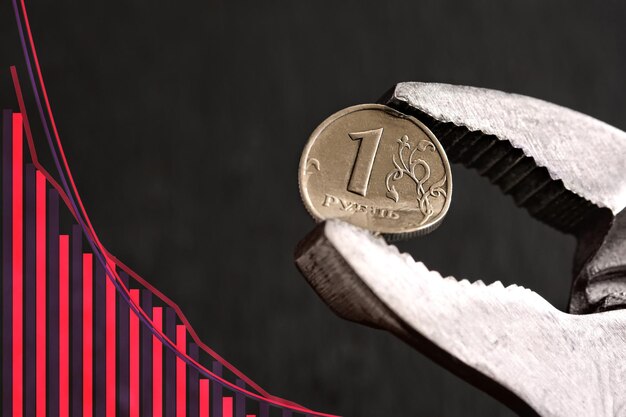If you’re new to Bitcoin or cryptocurrency, you might be wondering how to send Bitcoin from one wallet to another. Whether you’re transferring your Bitcoin to another personal wallet or sending it to someone else, the process is fairly simple but requires attention to detail. In this step-by-step guide, we’ll walk you through the process of sending Bitcoin to another wallet.
Step 1: Choose a Wallet
Before you can send Bitcoin to another wallet, you’ll need to choose a wallet for both sending and receiving your cryptocurrency. There are various types of wallets available, including software wallets, mobile wallets, and hardware wallets. Each type has its own advantages and security measures, so choose one that fits your needs.
Step 2: Get the Recipient’s Wallet Address
To send Bitcoin to another wallet, you’ll need the recipient’s wallet address. This address is a series of alphanumeric characters that uniquely identifies their wallet. The recipient usually provides this address, which you can copy or scan using a QR code. It’s important to double-check the address to ensure you’re sending to the correct wallet.
Step 3: Open Your Wallet and Initiate the Transfer
Once you have your own wallet and the recipient’s address, open your wallet and look for the option to send Bitcoin. This option is usually found in the “Send” or “Transfer” section of the wallet. Enter the recipient’s wallet address, specify the amount of Bitcoin you want to send, and review the transaction details carefully.
Step 4: Confirm and Verify the Transaction
Before finalizing the transaction, it’s crucial to confirm and verify all the details. Make sure the recipient’s wallet address is correct, double-check the amount of Bitcoin you’re sending, and review the transaction fee. Once you’re satisfied with the details, confirm the transaction. Depending on your wallet, you may be required to enter a password or confirm the transaction on another device.
Step 5: Wait for the Confirmation
After you’ve confirmed the transaction, you’ll need to wait for it to be confirmed on the Bitcoin network. This process can take several minutes to several hours, depending on the network congestion and transaction fee you’ve chosen. It’s important to be patient and avoid any attempts to cancel or modify the transaction during this time.
Step 6: Verify the Transaction on the Blockchain
Once the transaction is confirmed on the blockchain, you can verify it to ensure that it went through successfully. You can use a blockchain explorer or your wallet’s transaction history to check the status of the transaction. If the transaction is marked as “confirmed” or “completed,” the Bitcoin has been successfully sent to the recipient’s wallet.
By following these steps, you can easily send Bitcoin to another wallet. Just make sure to choose a reliable wallet, double-check the recipient’s address, and verify all the transaction details to ensure a smooth and successful transfer.
Create a New Wallet
If you don’t have a Bitcoin wallet, you’ll need to create one before you can send Bitcoin to another wallet. Follow these steps to create a new wallet:
- Choose a Wallet Provider: There are many wallet providers to choose from. Some popular options include Coinbase, Mycelium, and Ledger. Research different providers and select one that meets your needs.
- Download the Wallet App: Once you’ve chosen a provider, download their wallet app on your smartphone or computer. Make sure to download the official app to avoid scams.
- Set Up Your Wallet: Open the wallet app and follow the on-screen instructions to set up your new wallet. You may be asked to create a username, password, and backup phrase. Make sure to store your backup phrase in a safe place as it can be used to recover your wallet if you lose access to your device.
- Receive a Bitcoin Address: After setting up your wallet, you’ll be assigned a unique Bitcoin address. This address is similar to a bank account number and can be used to receive Bitcoin from other wallets.
- Secure Your Wallet: To protect your Bitcoin, enable any optional security features offered by your wallet provider. This may include two-factor authentication, biometric security, or a PIN code.
Once your wallet is set up and secured, you’ll be ready to send Bitcoin to another wallet. Follow the instructions provided by your wallet app or platform to complete the transaction.
Generate a Receiving Address
In order to send Bitcoin to another wallet, you first need to generate a receiving address. This address acts as a unique identifier for the wallet you are sending the Bitcoin to.
To generate a receiving address, you can use a Bitcoin wallet application or an online wallet service. These platforms provide you with a user-friendly interface to create a new wallet and generate addresses.
When you create a new wallet, the application or service will provide you with a private key and a corresponding public key. The public key acts as the receiving address, which you can share with others to receive Bitcoin.
It’s important to keep your private key secure and not share it with anyone, as it allows access to your wallet and the Bitcoins stored within it. Make sure to write it down and store it in a safe place.
Once you have generated a receiving address, you can share it with the person or entity who wants to send Bitcoin to your wallet. They can use this address to initiate the transaction and send the Bitcoin to your wallet.
Keep in mind that Bitcoin transactions are irreversible, meaning once the transaction is initiated, it cannot be reversed or canceled. Therefore, it’s essential to double-check the receiving address before sending any Bitcoin.
By following these steps, you can easily generate a receiving address and securely receive Bitcoin in your wallet.
Copy the Receiving Address
Before you can send Bitcoin to another wallet, you need to copy the receiving address of the recipient’s wallet. The receiving address is a unique identifier that ensures the Bitcoin is sent to the correct wallet.
To copy the receiving address, follow these steps:
| Step 1: | Open the recipient’s Bitcoin wallet. |
| Step 2: | Locate the option or tab that displays the receiving address. It may be labeled as “Receive”, “Recieve Bitcoin”, or something similar. |
| Step 3: | Click on the receiving address or the associated copy button to highlight and copy the address to your clipboard. |
| Step 4: | Ensure that you have copied the entire receiving address without any extra spaces or characters. |
It is crucial to double-check the receiving address before proceeding with the transaction to prevent sending Bitcoin to the wrong wallet. Any mistake in the receiving address can result in the permanent loss of the Bitcoin. Take the time to verify the address with the recipient to ensure its accuracy.
Once you have successfully copied the receiving address, you can proceed to the next step of sending Bitcoin to another wallet.
Open Your Current Wallet
To send Bitcoin to another wallet, you first need to access your current wallet. This means opening the wallet software or app on your device.
If you are using a web-based wallet, such as Coinbase or Binance, you can simply open the website in your internet browser and log in to your account.
For desktop wallets, you may need to click on the wallet icon on your computer’s taskbar or search for the wallet program in your applications folder.
If you have a mobile wallet, you can find the app on your home screen or in your app drawer.
Once you have opened your wallet, you will likely need to enter your password or use a biometric authentication method, such as your fingerprint or face scan, to access your account.
Make sure you are opening the correct wallet. Double-check the wallet address and compare it to the destination address where you want to send your Bitcoin.
Remember to always keep your wallet software or app up to date and secure. Use strong passwords and enable two-factor authentication if available.
Send Bitcoin to the Receiving Address
Once you have chosen the wallet you want to send Bitcoin from, and you have the receiving address of the recipient’s wallet, you can proceed with the transaction. Here are the steps to send Bitcoin to the receiving address:
- Open your Bitcoin wallet and navigate to the “Send” or “Send Bitcoin” section. This may vary depending on your wallet provider, but it is usually easily accessible from the main menu.
- Enter the receiving address in the designated field. Make sure to double-check the address to ensure accuracy. Bitcoin transactions are irreversible, so if you send Bitcoin to the wrong address, it cannot be retrieved.
- Specify the amount of Bitcoin you wish to send. Some wallets allow you to input the amount in your local currency, which will be converted to Bitcoin automatically. Alternatively, you can directly enter the amount in Bitcoin.
- Review the transaction details, including the amount, fee, and recipient address, to ensure everything is correct. Pay attention to the transaction fee, as this will determine how quickly your transaction is processed by the network. Higher fees usually result in faster confirmation times.
- If everything looks correct, confirm the transaction. Some wallets may ask for additional authentication, such as a password or two-factor authentication, to ensure the security of your funds.
- Once the transaction is confirmed, your Bitcoin will be sent to the receiving address. You can usually track the progress of the transaction using the transaction ID provided by your wallet.
It is important to note that Bitcoin transactions can take some time to be confirmed by the network, especially during high traffic periods. The confirmation time can vary, but it is typically around 10 minutes. Once the transaction is confirmed, the recipient will be able to access the sent Bitcoin in their wallet.
Remember to always double-check the receiving address before sending any Bitcoin. Sending Bitcoin to the wrong address can result in permanent loss of funds.
Confirm the Transaction
Before finalizing the transaction, it is important to double-check all the details to ensure that you are sending the correct amount of Bitcoin to the intended wallet address. Once a Bitcoin transaction is confirmed, it cannot be reversed or canceled.
Here are the steps to confirm the transaction:
1. Review the recipient’s wallet address: Compare the wallet address displayed on your screen with the one provided by the recipient. Check each character carefully to avoid sending Bitcoin to the wrong address.
2. Verify the amount of Bitcoin to send: Make sure that you have entered the correct amount of Bitcoin that you want to send. Take note that Bitcoin transactions may incur transaction fees, so consider including them if necessary.
3. Check the transaction fee: Bitcoin transactions typically require a small fee to be paid to miners who confirm the transactions. Ensure that the transaction fee is reasonable and acceptable to you.
4. Double-check the transaction details: Review the transaction details, including the wallet address and amount, one last time before confirming the transaction. Pay attention to any additional notes or messages that the recipient may have provided.
5. Confirm the transaction: Once you have thoroughly reviewed all the details and are confident about the accuracy of the transaction, click on the “Confirm” or “Send” button to initiate the transaction. Depending on the wallet or exchange platform you are using, you may need to enter your password or provide other forms of authentication.
6. Wait for confirmation: After confirming the transaction, it will be broadcasted to the Bitcoin network and added to a block by miners. The confirmation process may take some time, depending on network congestion and the transaction fee paid.
Note: Keep in mind that once the transaction is confirmed, it is not possible to reverse or cancel it. Ensure that you are sending Bitcoin to the correct recipient before confirming the transaction.
By following these steps, you can securely send Bitcoin to another wallet address and have peace of mind knowing that your transaction is accurate and confirmed.
FAQ: How to send bitcoin to another wallet
How can one learn how to send and receive Bitcoin, and why is this fundamental knowledge for anyone dealing with cryptocurrencies?
Learning how to send and receive Bitcoin is fundamental for anyone dealing with cryptocurrencies. This knowledge allows individuals to transact, store, and manage their digital assets securely.
What steps are involved in transferring Bitcoin to another wallet, and why might someone want to transfer their BTC to a different wallet?
Transferring Bitcoin to another wallet involves accessing your crypto wallet, selecting the send or transfer option, entering the recipient’s wallet address, and confirming the transaction. Users may want to transfer BTC to a different wallet for security reasons or to use a wallet that supports additional features.
Why is it important to know how to send Bitcoin to someone, and what information is required to successfully send bitcoins?
Knowing how to send Bitcoin to someone is essential for facilitating transactions. To send bitcoins, you typically need the recipient’s wallet address, and some wallets may allow transactions via QR codes for added convenience.
How does the process of sending cryptocurrency work, and what role do public and private keys play in securing these transactions?
Sending cryptocurrency involves using your private key to sign a transaction, which is then verified by the recipient using the public key. Public and private keys ensure the security and authenticity of the transaction.
What is the significance of a block explorer when sending or receiving cryptocurrencies, and how can it be used to track transactions?
A block explorer is a tool that allows users to track cryptocurrency transactions on the blockchain. It provides details like transaction status, confirmations, and wallet addresses, offering transparency and verification for users sending or receiving cryptocurrencies.
How can someone send Bitcoin to someone else, and what considerations should they keep in mind when sending digital assets?
To send Bitcoin to someone else, users need the recipient’s wallet address. Considerations include double-checking the address to avoid errors, ensuring the recipient’s wallet supports the cryptocurrency being sent, and being mindful of transaction fees.
What are the steps to transfer bitcoins, and why might someone want to transfer a specific amount to another wallet?
Transferring bitcoins involves accessing your wallet, selecting the send option, entering the recipient’s wallet address, and specifying the amount to transfer. Users may want to transfer a specific amount for various reasons, such as making a purchase or managing their portfolio.
How does one learn how to send Bitcoin using a mobile device, and what advantages does this offer for individuals actively involved in crypto transactions?
Learning how to send Bitcoin using a mobile device typically involves downloading a wallet app, creating an account, and following the app’s user interface. The advantage lies in the convenience and accessibility for individuals who are actively engaged in crypto transactions on the go.
Why is it crucial to use the correct public address when sending cryptocurrency, and what risks are associated with sending crypto to the wrong address?
Using the correct public address is crucial to ensure that the cryptocurrency reaches the intended recipient. Sending crypto to the wrong address is irreversible and could result in permanent loss of funds.
How does a QR code play a role in sending and receiving cryptocurrency, and why is it considered a convenient and secure method?
A QR code is a quick and secure method to send and receive cryptocurrency. Users can scan the QR code containing the recipient’s wallet address, eliminating the risk of manual input errors and providing an additional layer of security.







No responses yet